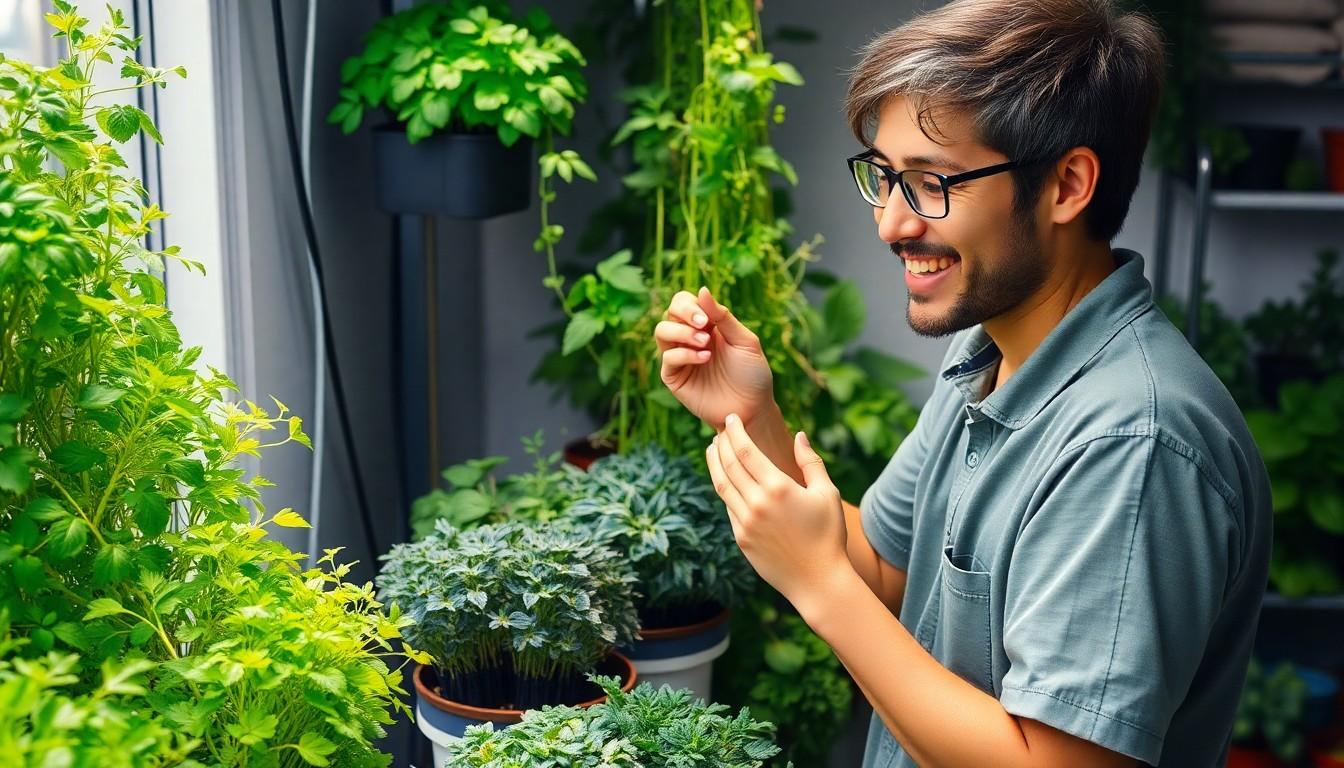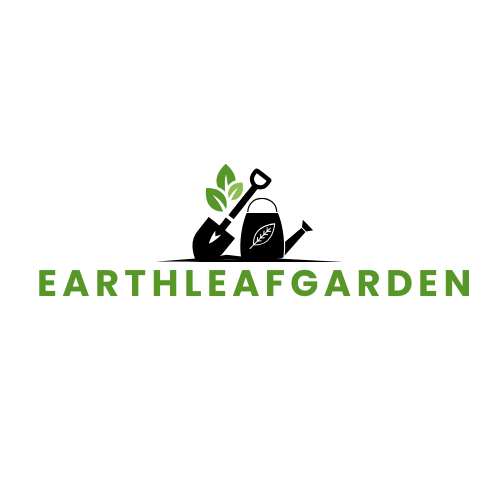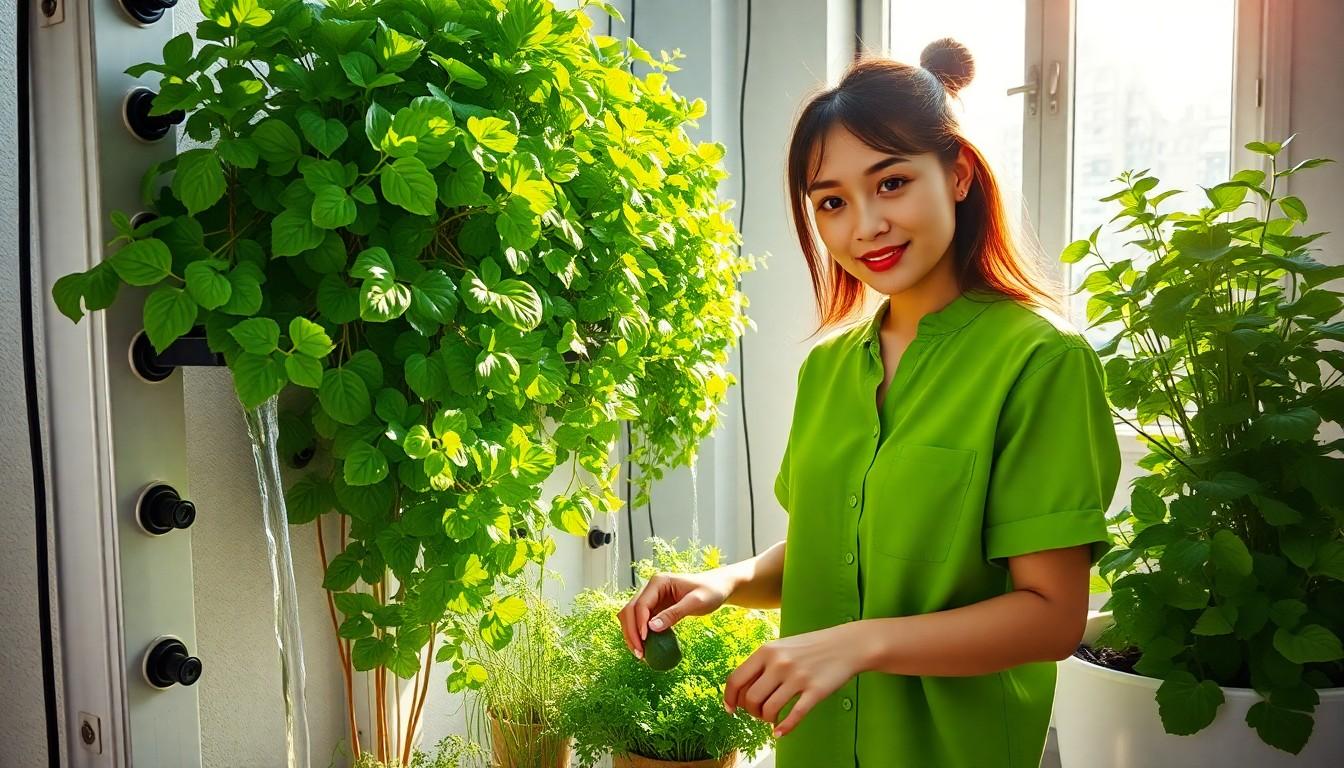Imagine stepping into your home and being greeted by a lush green oasis, all without dirt under your nails. Hydroponic indoor gardening makes this dream a reality. This innovative method allows anyone—yes, even those with the most notorious black thumbs—to grow fresh herbs, vibrant vegetables, and stunning flowers right in their living room.
Hydroponic Indoor Gardening
Hydroponic indoor gardening represents an innovative approach to growing plants without soil. This method relies on nutrient-rich water to support plant growth, promoting higher yields and faster growth cycles. With hydroponics, individuals can effectively cultivate a variety of plants, including leafy greens, herbs, and even small fruiting vegetables.
The convenience of hydroponic systems makes them suitable for various living spaces, such as apartments and homes with limited outdoor access. Systems often available include deep water culture, aeroponics, and nutrient film technique, each offering distinct advantages for plant cultivation.
Economic benefits accompany hydroponic gardening as well. Producing food indoors decreases reliance on store-bought items, reducing overall grocery expenses. Various research studies show that hydroponically grown plants can be healthier than those grown in traditional soil, as they often contain fewer pesticides and herbicides.
Space efficiency enhances the appeal of hydroponics. Compact systems fit easily on windowsills, countertops, or dedicated growing spaces. By maximizing vertical space, gardeners can grow a substantial amount of food in limited areas.
Seasonal constraints no longer pose challenges with hydroponics. Indoor systems allow for year-round cultivation regardless of external weather conditions. This flexibility enables individuals to grow their favorite plants at any time, ensuring fresh produce is always available.
Sustainability plays a key role in hydroponic gardening. Water conservation is significant, with studies noting hydroponic systems use up to 90% less water than traditional farming. Overall, this method caters to those seeking to reduce their environmental impact while enjoying the benefits of homegrown produce.
Benefits Of Hydroponic Indoor Gardening

Hydroponic indoor gardening offers multiple advantages that make it appealing for various living environments. This method not only optimizes space but also conserves water effectively.
Space Efficiency
Compact hydroponic systems allow for cultivation in limited areas, transforming small apartments into lush gardens. Vertical gardening techniques enable growers to maximize height for increased plant production. Such designs create more growing surfaces without consuming much floor area. Urban dwellers frequently opt for hydroponics because it fits seamlessly into their lifestyle. Various systems like tower gardens enhance efficiency, allowing a wide range of herbs and vegetables to thrive in confined spaces.
Water Conservation
Hydroponic systems utilize up to 90% less water compared to traditional farming methods. Nutrient-rich water recirculates, minimizing waste while providing essential hydration. In addition, moisture management is superior, reducing the need for frequent watering. This efficiency not only supports sustainable practices but also lowers utility bills for indoor gardeners. Consequently, hydroponics appeals to environmentally conscious individuals seeking to make a positive impact while enjoying fresh produce year-round.
Types Of Hydroponic Systems
Various hydroponic systems exist, each employing distinct methods for nurturing plants without soil. Understanding these systems helps individuals choose the best one for their indoor gardening needs.
Nutrient Film Technique
Nutrient Film Technique (NFT) uses a thin film of nutrient-rich water that flows over the plant roots. This method typically employs sloped channels, allowing gravity to manage water flow. Plants sit in net pots, supported by a base above the flowing water, which ensures roots access oxygen while absorbing nutrients. This continuous flow promotes healthy growth and efficient nutrient uptake. NFT systems maximize space, making them ideal for smaller areas. They function efficiently, reducing water and nutrient waste, appealing to environmentally conscious gardeners.
Deep Water Culture
Deep Water Culture (DWC) immerses plant roots directly in a well-oxygenated nutrient solution. Air stones provide necessary oxygen, promoting healthy root development. This system is user-friendly, suitable for beginners aiming for high yields. DWC allows rapid growth rates due to constant access to nutrients and oxygen. Growers often use floating rafts to support plants above the water, optimizing available space. It’s particularly beneficial for leafy greens and herbs, yielding impressive results in a compact design. This method’s simplicity and efficiency make it a popular choice in hydroponic indoor gardening.
Getting Started With Hydroponic Indoor Gardening
Starting with hydroponic indoor gardening involves a few essential steps to ensure a successful setup.
Choosing The Right Location
Selecting an appropriate location is crucial for optimal plant growth. Bright, indirect light is essential for most plants, making a windowsill or a well-lit room ideal. Consistent temperature between 65°F and 75°F supports healthy growth, so check the environment regularly. Proximity to a water source simplifies maintenance. Assess humidity levels, as some plants flourish in higher humidity while others prefer drier conditions. If possible, avoid areas with drafts or extreme temperature fluctuations, as this can stress plants and hinder growth.
Selecting Equipment And Supplies
Access to specific equipment and supplies is necessary for a successful hydroponic garden. Choose a hydroponic system that suits available space and desired plant types, such as deep water culture or nutrient film technique. Essential supplies include a nutrient solution containing essential macro and micronutrients. Grow lights enhance photosynthesis for plants in low-light areas, ensuring healthy development. Additionally, pH and EC (electrical conductivity) meters help monitor nutrient levels and ensure optimal conditions for plant growth. Finally, consider net pots, growing media, and water pumps to complete the setup effectively.
Common Challenges In Hydroponic Indoor Gardening
Hydroponic indoor gardening presents unique challenges that require attention for successful plant growth. Understanding these challenges helps gardeners navigate potential issues effectively.
Nutrient Imbalance
Nutrient imbalance leads to poor plant health in hydroponic systems. Plants often rely on specific nutrient ratios for optimal growth, making it crucial to monitor these levels regularly. Over-fertilization can cause nutrient burn, while under-fertilization stunts growth. Regularly checking pH and electrical conductivity of nutrient solutions ensures plants receive adequate nutrients. Correcting imbalances promotes stronger, healthier plants and reduces the risk of crop failure.
Pest Management
Pest management poses another challenge for indoor hydroponic gardens. Even within enclosed environments, pests like aphids and spider mites can thrive. Implementing preventive measures is key to keeping these pests at bay. Regularly inspecting plants allows for early detection of infestations. Introducing beneficial insects, such as ladybugs, can naturally control pest populations. Using organic pest control methods minimizes harm to plants and the surrounding ecosystem, ensuring a sustainable gardening approach.
Innovative Solution for Anyone
Hydroponic indoor gardening presents an innovative solution for anyone looking to grow fresh produce in limited spaces. Its efficiency in water usage and space maximization makes it an ideal choice for urban dwellers and environmentally conscious individuals. With various systems available and the ability to cultivate year-round, this method caters to diverse lifestyles and preferences.
As more people embrace hydroponics, they not only enjoy the benefits of homegrown food but also contribute to sustainable practices. By overcoming common challenges like nutrient management and pest control, indoor gardeners can create thriving green spaces within their homes. Embracing hydroponic gardening is a step toward a healthier lifestyle while supporting the environment.

